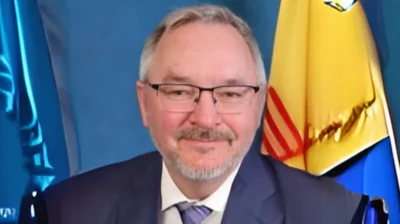A U.S. Army National Guard Sergeant First Class has become the first soldier without formal pilot training to plan and execute missions using an Optionally Piloted (OPV) Black Hawk helicopter, equipped with MATRIX technology developed by Sikorsky, a Lockheed Martin company. The demonstration took place during Northern Strike 25-2 exercises in Michigan.
Working alongside the Joint Personnel Recovery Agency and the Defense Advanced Research Projects Agency (DARPA), Sikorsky deployed the OPV Black Hawk at the exercise to test how autonomous flight could be integrated into military operations. Using only a handheld tablet and less than one hour of training, the soldier managed all mission phases independently. Tasks included directing a payload 70 nautical miles away and overseeing multiple precision airborne drops—marking the first time such missions were conducted entirely under control of an enlisted service member rather than specialized pilots or engineers.
During Northern Strike, three main types of cargo delivery were demonstrated: internal carry, external sling load, and precision parachute drop. The exercises also included a medical evacuation (MEDEVAC) scenario.
In one exercise, a soldier aboard a Coast Guard boat on Lake Huron remotely commanded the OPV Black Hawk for resupply from 70 nautical miles away and directed it through racetrack patterns for two parachute drops at varying altitudes. This marked the first fully soldier-controlled precision logistics operation with airborne drops by an OPV Black Hawk.
Another exercise saw the helicopter autonomously stabilize itself in hover while soldiers attached a 2,900-pound water tank—demonstrating complex aerial resupply capabilities without pilot intervention.
A third scenario involved transporting HIMARS launch tubes via six autonomous hovering hookups to another landing zone. The same aircraft was then used for a simulated personnel recovery, including transferring a patient to another Black Hawk at an unimproved site—the first instance of an untrained soldier commanding an autonomous MEDEVAC recovery from inside the aircraft.
“With lives on the line, Sikorsky’s MATRIX flight autonomy system can transform how military operators perform their missions,” said Rich Benton, vice president and general manager of Sikorsky, a Lockheed Martin company. “An optionally piloted Black Hawk aircraft can reduce pilot workload in a challenging environment or complete a resupply mission without humans on board. In contested logistics situations, a Black Hawk operating as a large drone offers commanders greater resilience and flexibility to get resources to the point of need.”
MATRIX technology is part of DARPA’s Aircrew Labor In-cockpit Automation System (ALIAS) program and allows non-pilot operators to conduct advanced aviation tasks such as resupply and personnel recovery in dangerous or low-visibility areas.
Sikorsky emphasized its ongoing commitment to providing solutions that expand warfighter capabilities in partnership with joint services. The recent demonstration is presented as evidence of innovation aimed at shaping future autonomous aviation systems.
Lockheed Martin describes itself as “a global defense technology company driving innovation and advancing scientific discovery.” More information about its activities can be found at lockheedmartin.com.








